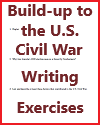| Conflict over Slavery Questions |
|---|
| www.studenthandouts.com > U.S. History > National and Sectional Conflict > Worksheets |
 |  |
|---|
|
Click here to print. Answers will vary. 1. Explain why large numbers of northern workers, despite many having racist inclinations, were opposed to slavery. 2. Illustrate how the Underground Railroad operated. 3. Discuss the pros and cons of the Kansas-Nebraska Act. 4. Given the laws which existed at the time, do you believe that the Dred Scott decision was fair? Do you see any logical inconsistencies in forcing a slave to remain a slave despite relocating to a free state? 5. Describe the concept of secession. |
|---|
|
The Kansas-Nebraska Act of 1854 was a significant piece of legislation that had profound and far-reaching consequences for the United States. It aimed to address the issue of westward expansion and the organization of new territories, particularly in the context of slavery.
Pros: Popular Sovereignty: One of the key principles of the Kansas-Nebraska Act was the concept of popular sovereignty, which allowed the residents of the territories (Kansas and Nebraska) to decide whether they would allow slavery or not. This was seen as a way to resolve the contentious issue of slavery expansion peacefully and through democratic means. Territorial Organization: The Act provided for the organization and settlement of the Kansas and Nebraska territories, which were essential for westward expansion. It opened up new opportunities for settlement and economic development in these regions. Economic Interests: Proponents argued that allowing settlers to decide on the issue of slavery in these territories would enable them to make decisions based on their economic interests. In areas with agricultural economies, such as Kansas, this could have significant economic implications. Cons: Repeal of the Missouri Compromise: The Kansas-Nebraska Act effectively repealed the Missouri Compromise of 1820, which had prohibited slavery in the territories north of a designated line (36°30' N). This repeal was seen as a betrayal of the longstanding compromise and further deepened sectional tensions. Violence in "Bleeding Kansas": The Act's implementation led to violent conflicts in Kansas between pro-slavery and anti-slavery settlers. This period, known as "Bleeding Kansas," resulted in bloodshed and brutality as both sides vied for control and influence in the territory. Erosion of National Unity: The Kansas-Nebraska Act intensified the sectional divide between the North and the South over the issue of slavery. It eroded the fragile sense of national unity and made compromise increasingly difficult. Precipitated the Civil War: The Act's promotion of popular sovereignty in determining the status of slavery in new territories ultimately contributed to the outbreak of the American Civil War. The violent clashes in Kansas and the heightened tensions it generated were significant precursors to the conflict. Moral Opposition: Many abolitionists and anti-slavery activists vehemently opposed the Act on moral grounds. They saw it as a betrayal of the principles of freedom and equality and were appalled by the spread of slavery into new territories. In retrospect, the Kansas-Nebraska Act is widely viewed as a flawed and divisive piece of legislation. While it aimed to address the issue of slavery expansion peacefully, it ultimately exacerbated tensions, led to violence, and played a pivotal role in the lead-up to the Civil War. It stands as a stark example of the challenges faced by the United States in reconciling its deeply rooted sectional differences over the institution of slavery. |
| www.studenthandouts.com > U.S. History > National and Sectional Conflict > Worksheets |









